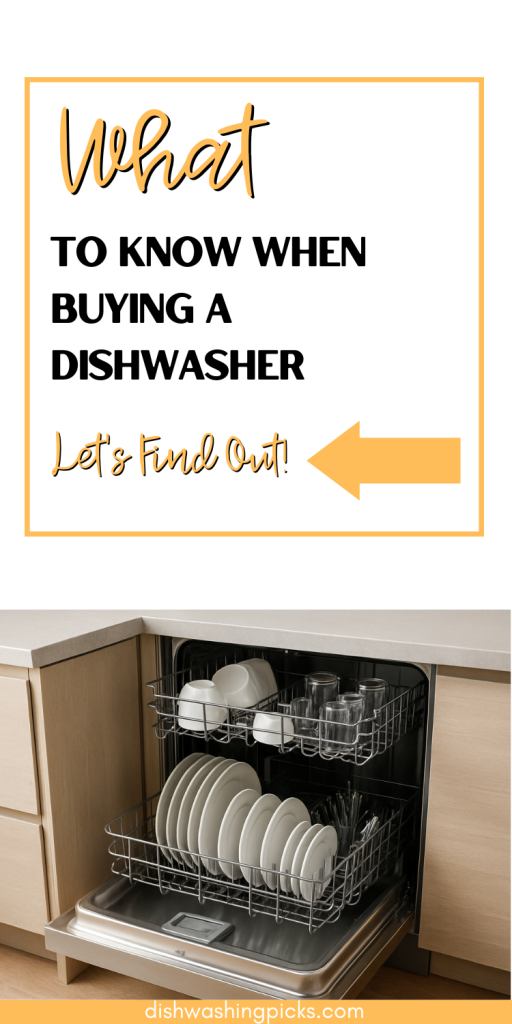
Let’s be real.
Buying a dishwasher isn’t exactly the most thrilling life event. It’s not like picking out a puppy or planning a vacation. But let me tell you—get the wrong one, and suddenly it becomes very exciting. The bad kind of exciting. Like “Why are my dishes still crusty after three cycles?” exciting.
So yeah, whether you’re replacing an old one or buying your very first shiny machine, you don’t want to just click the first “on sale” option and hope for the best. There’s a little more to it.
Let’s break it down the fun way, shall we?
Start with the Big Question: What Do You Actually Need?
Okay, pause. Before you even glance at brands or reviews or start Googling “quietest dishwasher 2025,” think about you.
Are you a person who cooks daily and produces a mountain of dishes like it’s your full-time job? Or more of a “hmm… cereal in a coffee mug” kinda situation?
Because how often you run it—and what kind of stuff you toss in there—matters.
If you’re feeding a whole crew and running it nightly, you’ll want something big, powerful, and fast. If you’re a solo dweller who only loads the thing twice a week, you can get away with a smaller, sleeker model. No judgment either way. Just… be honest with yourself.
Size: Yes, It Matters
Dishwashers basically come in three flavors:
- Standard (24-inch) – the “regular” size. Fits most kitchens and families.
- Compact (18-inch) – perfect for small spaces or one-person households.
- Drawer dishwashers – fancy, flexible, and $$$. Think: split loads, smaller runs, bougie vibes.
Oh, and measure. Then measure again. Then check your water line and cabinet situation. Trust me, nothing kills excitement like realizing the dishwasher you just fell in love with… doesn’t fit. Been there. Not fun.
Noise Level: Do You Like Peace and Quiet?
Here’s something most people don’t think about till it’s too late: dishwasher noise. You won’t care… until you’re trying to binge Netflix and all you hear is whirrrr-GRRRR-sploosh-clunk from the kitchen.
Quick tip:
Look at the decibel (dB) rating. Under 45 dB = library quiet. Over 50 dB? That thing’s got opinions and it’s not afraid to express them.
If your kitchen’s open to your living room (or your sanity), go quiet. You won’t regret it.
Wash Cycles: Do You Actually Use All of Them?
Some dishwashers come with like… twelve different cycles. “Eco Wash,” “Heavy Duty,” “China/Crystal,” “Express 30,” “Sanitize,” “Pre-Wash,” and probably one for emotional support too.
But honestly? You’ll probably use 2 or 3, tops.
So don’t pay more just for extra buttons that’ll never get pressed. Focus on the ones you actually need:
- Normal – for your everyday dishes.
- Heavy – pots, pans, casserole chaos.
- Quick/Express – when you need those plates ASAP.
- Sanitize – if you’ve got babies or you’re just super germ-conscious.
Bonus: some newer models have smart sensors that figure it out for you. Lazy genius tech? Yes, please.
Interior Layout: Can It Handle Your Weird Pots?
Here’s the underrated hero of dishwasher shopping: racks and layout.
Seriously, don’t skip this.
Some models look great outside, but inside? It’s a war zone. The tines are too tight. Your pans don’t fit. Your mugs topple over like drunk dominoes.
So, check:
- Are the racks adjustable?
- Can you fit a full-size baking sheet without it blocking the spray arms?
- Is there a third rack for silverware (these are magical, btw)?
- Or do you prefer the classic silverware basket?
Don’t just assume it’ll work for you. Think of your weirdest dish—if that baby doesn’t fit, it’s gonna drive you nuts.
Energy Efficiency: Save the Planet (and Your Bills)
Dishwashers today are way more efficient than the old-school ones that sounded like airplanes and used water like it was going out of style.
Look for the ENERGY STAR® label. Not only will it use less water and electricity, but it’ll save you money over time. Win-win.
And if you care about drying performance (because who wants to towel-dry dishes after a full wash?), check for models with heated drying or fan-assisted drying. Game-changer.
Smart Features: Cool or Just Gimmicky?
Wi-Fi connected dishwashers. Voice control. Phone notifications when your dishes are done.
Do you need them? Not really.
Do they make you feel like you live in a sci-fi movie? Absolutely.
If you’re into that kind of thing, go for it. But don’t let it be a dealbreaker. The basics—cleaning power, layout, and reliability—still matter way more than being able to yell at Alexa to start your rinse cycle.
Price: What’s Worth Paying For?
Okay, real talk: Dishwashers can range from $300 to $2,000+. You don’t need the top-of-the-line one unless you really, really want it.
Here’s the breakdown:
- Budget ($300–$600): Gets the job done. No frills. Louder, fewer cycles, basic racks.
- Mid-range ($600–$900): Quieter, better features, nicer racks, improved drying.
- High-end ($1,000+): Ultra-quiet, custom layouts, smart tech, luxe vibes.
Pick your comfort zone. And remember—installation costs extra. Oh, and maybe set aside a little for rinse aid and dishwasher cleaner too. Gotta keep that baby fresh.
Don’t Overthink, But Don’t Underthink Either
Buying a dishwasher isn’t rocket science. But it’s also not something you want to wing.
Figure out your real-life needs. Think about what drives you crazy in your current dishwasher (or what would). And read real reviews—not just the ones on the brand’s website.
And hey—if you’re still unsure, go walk around an appliance store and physically open a few. Pull the racks, poke the buttons, get a feel for it. You’re allowed to date your dishwasher a little before committing.
